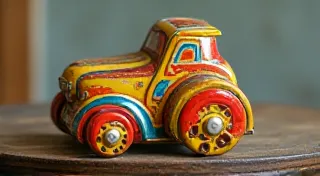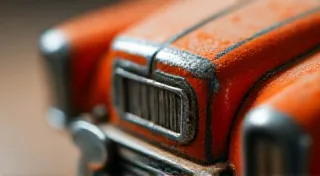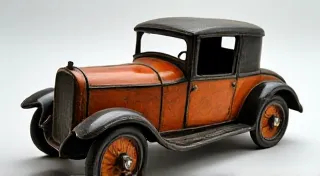Spotting Fake Vintage Toy Cars: How to Avoid Scams
The world of vintage toy cars is a thrilling one, filled with nostalgia, history, and the potential for valuable investments. However, like any collector's market, it's also rife with fakes and reproductions intended to deceive unsuspecting buyers. Protecting your investment and ensuring you acquire authentic pieces requires a keen eye, a healthy dose of skepticism, and a good understanding of common scam tactics. This article will equip you with the knowledge to identify red flags and avoid costly mistakes in your pursuit of genuine vintage toy cars.
Understanding the Landscape of Fakes
Before diving into specific warning signs, it’s crucial to understand *why* fakes exist. The popularity of vintage toy cars has fueled a market for reproductions. These can range from poorly executed copies made for profit to skilled forgeries attempting to perfectly replicate rare and highly sought-after models. The motives are simple: to sell a less expensive item as the real deal and reap a larger profit.
Fakes can fall into a few categories:
- Reproductions: These are generally newer castings made to resemble classic toy cars. They might be made from similar materials, but lack the age and wear of the original. Often, they are sold as “reproductions” but sometimes mislabeled to appear genuine.
- Alterations/Modifications: Genuine vintage toy cars are sometimes altered – repainted, with new parts substituted, or even re-cast – to increase their perceived value or to mimic a rarer version.
- Forgeries: These are the most sophisticated fakes, attempting to perfectly replicate a specific, rare, and valuable model. They involve a significant investment in time and resources to recreate the original casting, paint scheme, and details.
Key Red Flags: What to Look For
Let’s explore the specific characteristics you should scrutinize when evaluating a potential vintage toy car purchase. Remember, a combination of these red flags is far more concerning than a single anomaly.
1. Casting Quality & Materials
Original Casting vs. Modern Molding: Genuine vintage toy cars were typically die-cast using older molds and techniques. Modern casting processes produce a much smoother, more consistent finish. Look for subtle imperfections, tool marks, and slight inconsistencies in the casting – hallmarks of older production methods. A perfectly smooth casting is often a warning sign. The materials themselves also offer clues; understanding what specific alloys were used in the era you're collecting from can be crucial. For a deeper dive into understanding the progression of materials used in vintage toy cars, it’s worth exploring resources related to identifying early tinplate toy cars, a common category for many classic models.
Material Consistency: Research the materials used in the specific model you’re interested in. Early die-cast toys often used alloys with different compositions than those used in later reproductions. A noticeably different weight or feel can be a clue.
Seam Lines & Flash: Older castings often have more prominent seam lines (where the mold halves joined) and "flash" (excess material around edges). Modern casting processes minimize these imperfections.
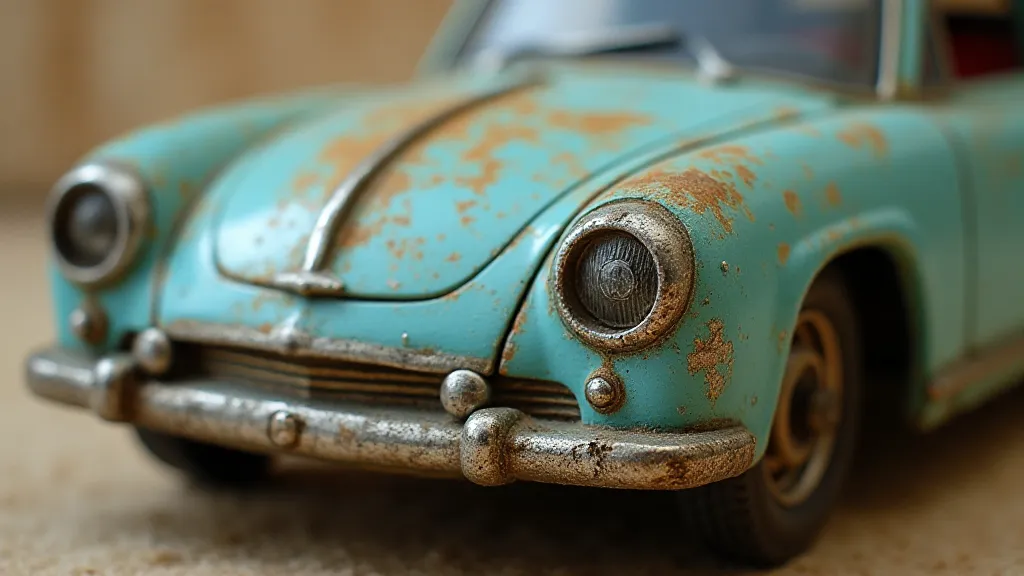
2. Paint & Finish
Original Paint Wear: Authentic vintage toys will exhibit signs of wear consistent with their age and handling. This might include scratches, paint chips, and slight discoloration. However, the *pattern* of wear is crucial. Scratches and chips should appear naturally, not like someone deliberately tried to simulate wear.
Paint Application: Observe the paint application closely. Original paint jobs often had slight imperfections, inconsistencies in color depth, or subtle paint drips – things that modern, automated processes would eliminate.
Color Matching: Research the original color variations for the specific model. Reproductions sometimes use slightly different color formulations, which can be noticeable under close examination.
3. Markings and Markings
Manufacturer’s Marks: Carefully examine any markings, decals, or stamps on the toy. These should be clear, consistent with the manufacturer's style, and appropriately placed for the era. Look for blurring, smudging, or inconsistencies in the font or logo.
Copyright & Patent Dates: These dates should align with the era of the toy’s production. Mismatched dates are a clear indication of a fake.
"Made in..." Labels: The country of origin for the toy should be consistent with the period when it was manufactured. A toy purported to be from the 1950s, with a "Made in China" label, is obviously a fake.
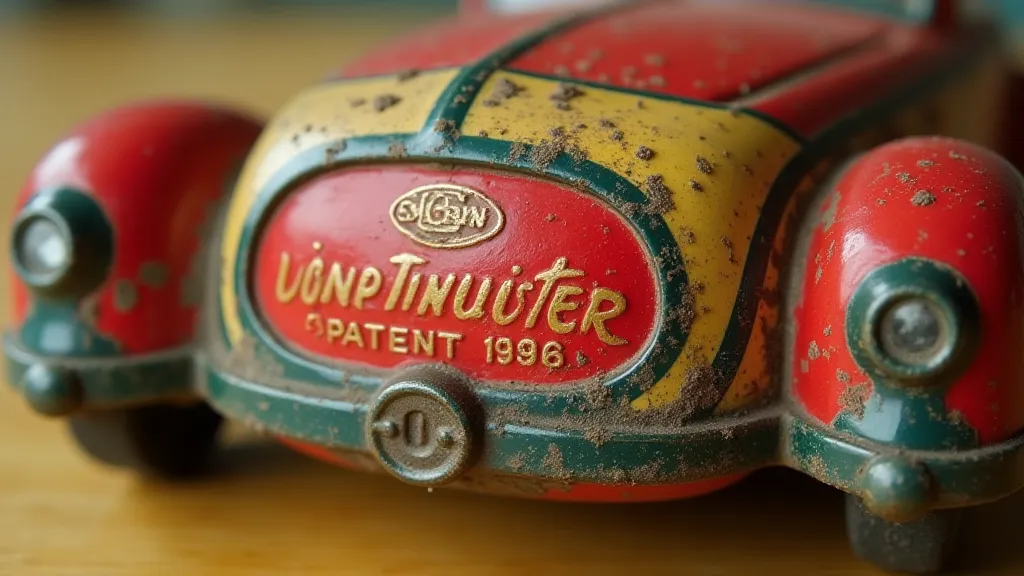
4. Wheels, Axles & Undercarriage
Wheel Construction: Examine the wheels and axles closely. Original wheels were often made from a softer material than those used in modern reproductions. The method of attachment (rivets, screws, or press-fit) should be consistent with the era.
Rust & Corrosion: While some rust is expected on older toys, excessive or unusual corrosion can be a sign of a fake.
Undercarriage Details: The undercarriage can reveal a lot about a toy’s authenticity. Look for casting details, markings, and the type of finish used.
Beyond the Obvious: Less Common Red Flags
While the points above are vital, experienced collectors often look for more subtle clues. These can include the quality of the rivets, the texture of the rubber tires (if present), and even the smell of the paint and materials. Reproductions often use cheaper, more chemically-laden materials that have a distinctly different odor than original vintage pieces. Understanding the historical context of toy production – the manufacturing processes, the types of inks used for decals, and the overall production quality – can significantly improve your ability to spot a fake.
Where to Buy and How to Protect Yourself
Reputable Dealers: Purchasing from established and reputable vintage toy car dealers is the safest option. These dealers typically have the expertise to authenticate toys and offer guarantees of authenticity.
Auctions: While auctions can be a source of great deals, they also carry higher risks. Thoroughly research the seller's reputation and examine the toy's description and photos carefully. Ask questions and request additional information if needed.
Online Marketplaces: Exercise extreme caution when buying from online marketplaces. Check the seller's feedback, examine the photos meticulously, and be wary of deals that seem too good to be true.
Seek Expert Opinions: If you’re unsure about a toy’s authenticity, consider seeking the opinion of a recognized expert in vintage toy cars. Many collectors and dealers offer authentication services.
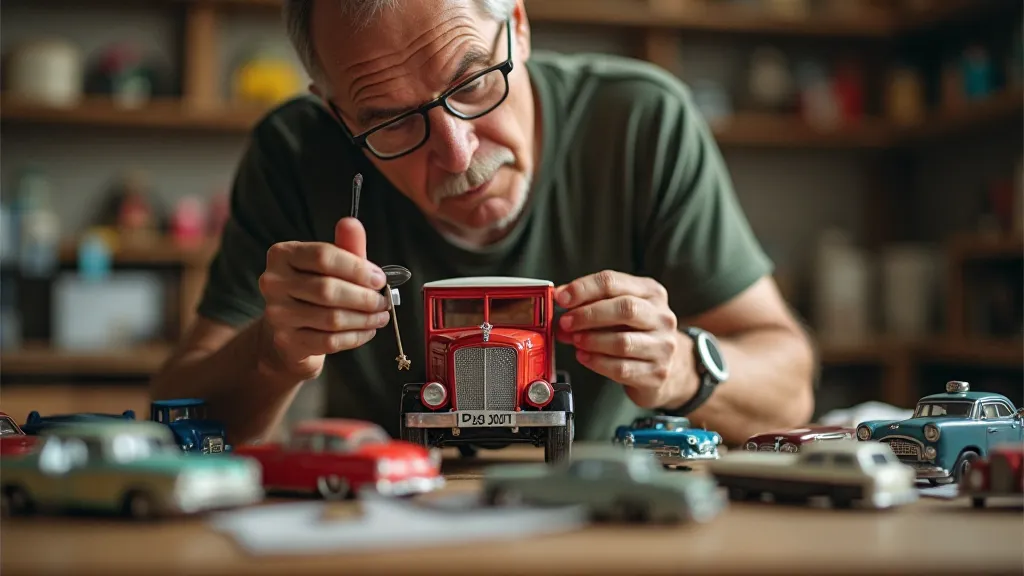
Preserving Your Collection: A Long-Term Commitment
Acquiring authentic vintage toy cars is just the beginning. Proper storage and preservation are essential to maintaining their value and condition. Exposure to sunlight, moisture, and extreme temperatures can all damage paint, rubber, and other delicate components. For detailed guidance on how to safeguard your investment, check out our guide to storing vintage toy cars, where we cover everything from optimal storage environments to specialized cleaning techniques.
The Social and Cultural Significance of Vintage Toy Cars
Vintage toy cars aren't just objects; they are tangible links to the past, reflecting the design aesthetics, manufacturing techniques, and social attitudes of their respective eras. They offer a fascinating window into the history of the automotive industry and the evolution of children's toys. Their enduring appeal lies not only in their nostalgic charm but also in their ability to evoke powerful memories and spark a sense of wonder. The way these miniature vehicles embody broader societal shifts and design trends is quite remarkable; if you're interested in a deeper exploration of the cultural stories embedded within these toys, read our piece on The Obsidian Mirror: Reflecting Societal Shifts Through Miniature Automobilia.
Conclusion
Collecting vintage toy cars can be a rewarding and enjoyable hobby. However, protecting your investment requires diligence, knowledge, and a healthy dose of skepticism. By understanding the red flags of fakes, researching the specific models you’re interested in, and purchasing from reputable sources, you can minimize your risk and build a collection of genuine treasures.

